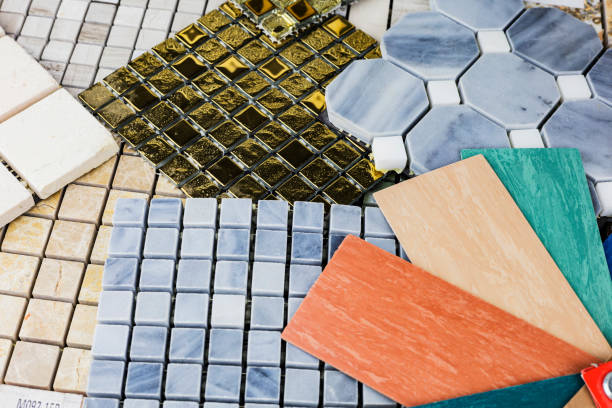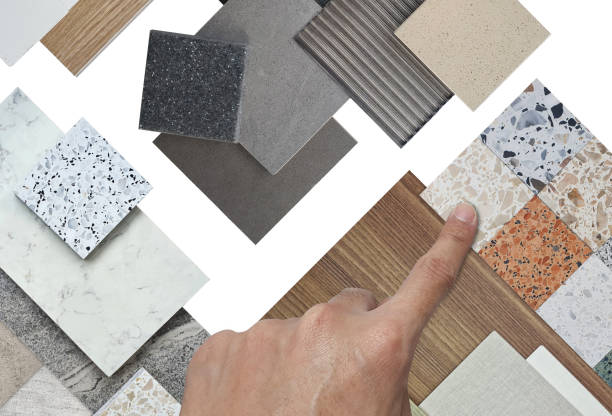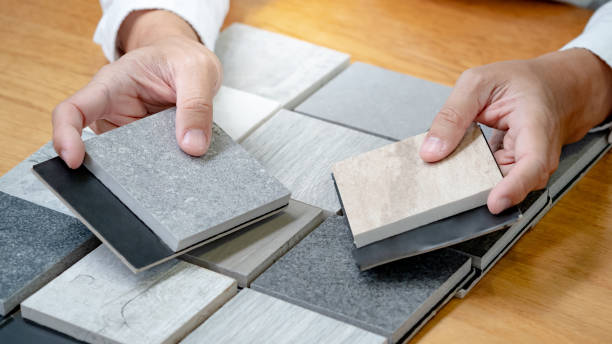When designing your dream home, flooring is pivotal in shaping its aesthetics, functionality, and value. As a foundational element, flooring affects how a room feels, how it’s used, and even how it ages over time. Among the numerous flooring options, tiles and marble are the most popular choices.
Tiles, known for their versatility and practicality, are a staple in modern homes. Meanwhile, marble, a symbol of luxury and elegance, has graced palaces, historical monuments, and high-end interiors for centuries. Choosing between the two requires careful consideration of various factors, including design, durability, maintenance, cost, and lifestyle needs.
This comprehensive guide dives into every aspect of tiles and marble, providing the insights you need to make an informed decision that aligns with your preferences and long-term goals.

1. Appearance: The Aesthetic Factor
Tiles: Unlimited Customisation
Tiles are a designer’s dream, offering infinite colours, patterns, textures, and finishes. Whether you aim for a rustic, contemporary, or eclectic look, tiles can adapt to any design vision.
- Variety of Designs: From plain ceramic tiles to textured vitrified options and intricate Moroccan patterns, tiles can replicate the appearance of wood, stone, or even high-end marble.
- Surface Finishes: Tiles come in glossy, matte, and anti-slip finishes, allowing you to tailor the look to specific spaces like bathrooms or living rooms.
- Customisation: With tiles, you can create artistic mosaics and geometric patterns or mix and match colours to produce bespoke designs.
Marble: Timeless Elegance
Marble’s appeal lies in its natural beauty and the unique character of each slab. Unlike tiles, no two pieces of marble are identical, giving your home a bespoke and luxurious feel.
- Natural Veining: Marble’s veins and colour variations are formed over millions of years, resulting in organic patterns that exude sophistication.
- Luxurious Ambiance: Marble floors create a sense of grandeur, making them preferred for formal areas like dining rooms or foyers.
- Polished Finish: When polished, marble reflects light beautifully, giving spaces an expansive and luminous quality.
2. Durability: Strength vs. Sensitivity
Tiles: Built for Endurance
Tiles are engineered for toughness, making them a reliable choice for busy households.
- Resilience: Tiles are scratch-resistant and impervious to most forms of wear and tear, making them ideal for areas with high foot traffic.
- Heat and Water Resistance: Tiles can withstand temperature changes and are less likely to warp or crack under extreme conditions.
- Longevity: With proper installation, tiles can last decades with minimal maintenance.
Marble: Long-lasting with Care
Marble is a natural stone; while durable, it requires a delicate touch to maintain its integrity.
- Susceptibility to Damage: Marble is softer than tiles and prone to scratches, chips, and stains, especially when exposed to acidic substances.
- Lifespan: Despite its sensitivity, marble can last for generations when properly sealed and maintained.
- Reparability: Damaged marble can often be polished and restored at a higher cost than replacing tiles.
3. Maintenance: Easy Cleaning vs. Careful Upkeep
Tiles: Low Maintenance
Tiles are favoured for their practicality and ease of care, especially in high-traffic or moisture-prone areas.
- Routine Cleaning: A simple sweep and mop with a mild detergent are sufficient to keep tiles looking their best.
- Stain Resistance: Tiles are non-porous, making them resistant to most stains.
- Grout Challenges: The grout between tiles can accumulate dirt and discolour over time, requiring occasional scrubbing or resealing.
Marble: Demands Dedication
Marble’s porous nature requires more attentive care to preserve its beauty.
- Cleaning Products: Marble must be cleaned with pH-neutral solutions to avoid etching or discolouration.
- Regular Sealing: Sealing is essential to protect marble from moisture and stains. It is typically required every 6–12 months.
- Polishing: Over time, marble may lose its shine and require professional polishing to restore its lustre.
4. Cost: Budget-Friendly vs. Investment-Worthy
Tiles: Affordable and Accessible
Tiles are widely available at various prices, making them a cost-effective choice for most homeowners.
- Material Costs: Basic ceramic tiles can cost as little as $1 per square foot, while high-end vitrified tiles range from $3 to $10 per square foot.
- Installation: Tiling is straightforward, and installation costs are relatively low compared to marble.
Marble: A Luxury Investment
Marble is significantly more expensive in terms of material and installation costs.
- Material Costs: Indian marble typically costs $5–$15 per square foot, while imported options like Carrara or Calacatta marble can exceed $50 per square foot.
- Installation: Marble installation requires skilled craftsmanship, which adds to the overall expense.
- Long-Term Value: Marble can increase the resale value of your home, making it a worthwhile investment for high-end properties.
5. Environmental Impact
- Tiles: Modern tiles are often made from recycled materials, are highly energy-efficient to produce, and are recyclable, making them an eco-friendly option.
- Marble: As a natural material, marble is biodegradable, but its extraction process has a larger environmental footprint. Ethical sourcing is key to minimising its impact.
6. Practical Applications and Expert Advice
Best Uses for Tiles
- High-Traffic Areas: Kitchens, hallways, and living rooms benefit from tiles’ durability and easy maintenance.
- Bathrooms and Laundry Rooms: Tiles’ water resistance makes them ideal for wet areas.
Best Uses for Marble
- Formal Spaces: Marble shines in foyers, dining rooms, and master bathrooms, where elegance is prioritised over practicality.
- Accent Features: Marble can also be used for feature walls, countertops, or decorative inlays for a luxurious touch.
Which One is Right for You?
Choosing between tiles and marble depends on your priorities:
- If you value practicality and cost-effectiveness, tiles are the clear winner.
- If you’re drawn to luxury and timeless beauty, marble is your choice.
For the best of both worlds, consider mixing materials—tiles for functional spaces and marble for aesthetic accents. Regardless of your choice, investing in professional installation and proper maintenance will ensure your flooring stands the test of time.

Final Thoughts
Choosing tiles and marble is not merely about selecting a flooring material—it’s about creating a space that resonates with your vision, lifestyle, and long-term goals. Tiles offer unmatched versatility, affordability, and ease of maintenance, making them an excellent choice for modern, functional homes. On the other hand, marble, with its timeless elegance and luxurious appeal, elevates your interiors, creating a statement of sophistication and grandeur.
By weighing the practical considerations alongside aesthetic aspirations, you can strike a balance that suits your immediate needs and future ambitions. Whether you lean toward the practicality of tiles or the splendour of marble, remember that flooring is an investment not just in your home but in the comfort, beauty, and memories it will foster. Choose wisely, and let your flooring lay the foundation for a home that feels like yours.

